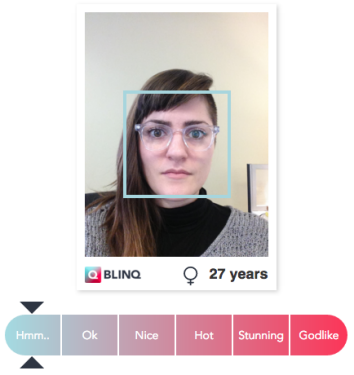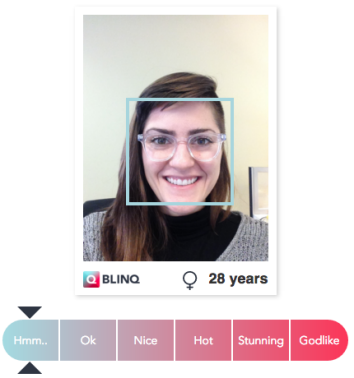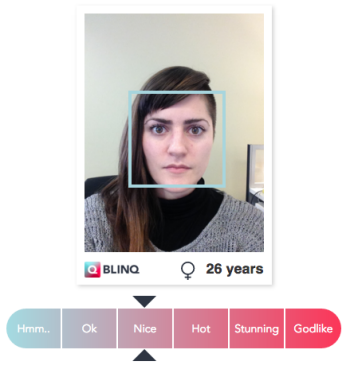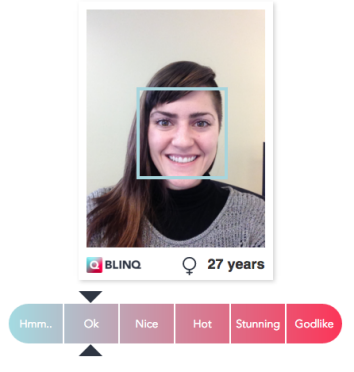The Internet’s abiding narcissism has an addictive new outlet: howhot.io, a site that rates people on an attractiveness scale based on their uploaded photos. TechCrunch reports that Swiss dating app Blinq launched the site last week, and it drew more than 2 million unique views in its first two days. Its allure is manifest: Why leave the critical question of sex appeal up to human error on Hot or Not when a purely objective, infallible computer algorithm can offer a definitive answer?
Human intelligence did play a small role in the howhot.io method: Blinq calibrated its algorithm based on its users’ preferences. Co-founder Jan Berchtold claims the company took more than 100,000 photos, including celebrity images, and more than 20 million responses into account. (The dating app works much like Tinder, with a binary “Hi” or “Bye” response to a potential match’s photo.) Like Microsoft’s impossibly inaccurate How-Old.net, howhot.io guesses a user’s age, too. In the future, Blinq plans to use the algorithm to help users choose the best of several photos they upload. For now, it just spits out whether a computer wants to do you.
I took the algorithm out for a spin this morning, feeling reasonably hot for a workday. Let’s see if artificial intelligence agrees!

Screenshot/howhot.io
“Hmm.. ”?! OK, so howhot.io is no Ava when it comes to flattery. But it’s first thing in the morning! Maybe the algorithm senses my lethargy. Here’s a bit more pep.

Screenshot/howhot.io
Well then. Could it be my reading glasses? A colleague suggests that, since my specs are see-through, the computer might not be able to tell whether they’re a cute accessory or an abnormal facial protrusion.

Screenshot/howhot.io
Getting there! I bet a winning smile will put me over the top. Nobody likes a pouty gal.

Screenshot/howhot.io
My pride in tatters, I turned to Blinq’s disclaimer for comfort. “Attractiveness is highly subjective and its perception differs from culture to culture,” the site says. “Our algorithm is trained on the pictures of the BLINQ community that is mainly based in Switzerland. In other parts of the world the perception might be very different.” In other words, it’s not that I’m not hot—I’m just not hot in Switzerland.
Blinq believes deeply in its own shtick, describing its software in impenetrable academic buzzwords to lend it a veneer of scientific credibility: “Our computational pipeline comprises a face detector, convolutional neural networks for the extraction of deep features, standard support vector regression for gender, age and facial beauty, and—as the main novelties—visual regularized collaborative filtering to infer inter-person preferences as well as a novel regression technique for handling visual queries without rating history.” Computers, of course, have no known erogenous zones. I don’t know about howhot.io’s other 2 million users, but the only novel regression I experienced this morning was in my self-esteem.
For all its convolutional neural networking, Blinq is trying to make its dating app seem as IRL-like as possible. Users tap “Hi” on a hottie’s photo as they would when they “look at someone in a bar,” and when they match, it’s “like offline where you look at each other.” In Zürich and Bangkok, Blinq offers a heatmap to show where Blinq users are congregating in real time. But one of the things that makes dating apps so not like meeting someone in real life is the photos, which are often unrepresentative of how a user actually looks and which can’t take mitigating factors like bad breath or adorable laughs into account. Outsourcing a photo decision to a computer would only make the dating app more of a futile fantasy.
